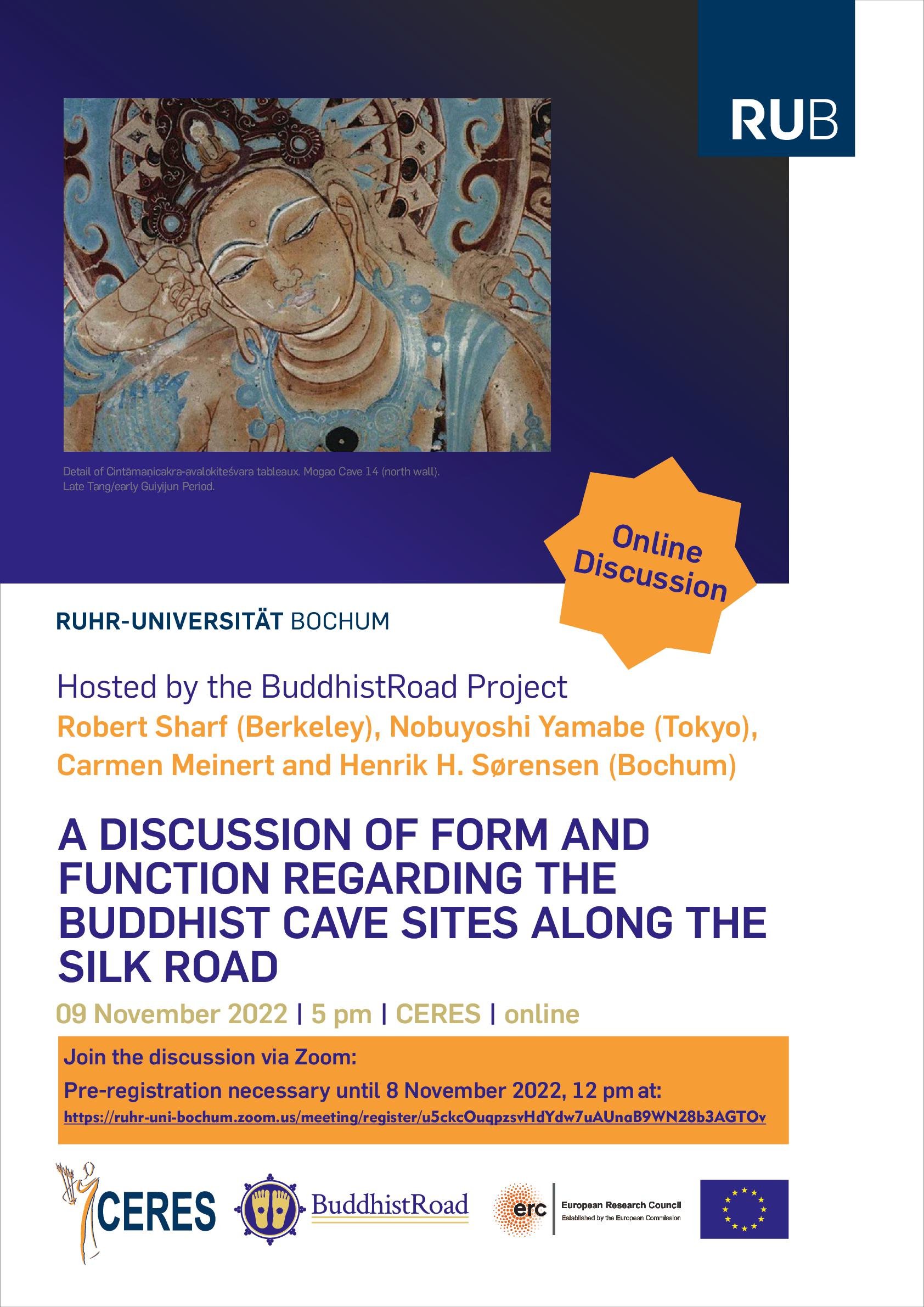A Discussion of Form and Function Regarding the Buddhist Cave Sites along the Silk Road

09 November 2022 - Robert Sharf (Berkeley), Nobuyoshi Yamabe (Tokyo), Carmen Meinert, and Henrik H. Sørensen (Bochum)
A Discussion of Form and Function Regarding the Buddhist Cave Sites along the Silk Road
online discussion hosted by the BuddhistRoad project, CERES, Ruhr-Universität Bochum
An online discussion between Robert Sharf (Berkeley), Nobuyoshi Yamabe (Tokyo), Carmen Meinert and Henrik H. Sørensen of the BuddhistRoad Project concerning Buddhist usage and practice in the cave sanctuaries located along the Northern Part of the Silk Road in Central Asia. The discussion takes the views presented in Sharf’s paper “Art in the Dark,” and the response by Henrik Sørensen in “Light on Art in the Dark” as the points of departure.
In the past decade there has been an ongoing debate as regards form and function of the Buddhist cave-sanctuaries located along the Silk Road, i.e., were they temples, places of active practice and worship, or were they mostly, ancestral commemorative spaces that were not visited, but rather left in darkness as monuments of piety and prestige? If they were places of worship and practice, how did that express itself, if the caves functioned as actual temples with a monastic population living in them, what is the evidence for this, and if places of meditation, on the basis of what may this be established? Is it at all possible to gauge function from the physical forms or decoration of the caves? Were there different types of usage depending on the cultures that used them? The discussion will centre on these issues, and the participants will present their respective views and argue for them on the basis of their research. Those attending the meeting are invited to participate in the discussion, and to the extent possible have prepared questions or comments.


